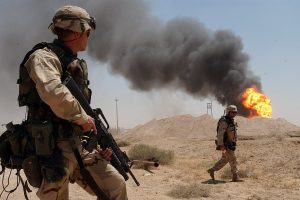The BRICS summit in Kazan introduces new members and forms BRICS Plus to challenge Western dominance globally. Discussions focus on BRICS Pay and countering US influence
The BRICS summit in Kazan is significant as it includes new members and signifies the formation of BRICS Plus. The goal is to challenge the global dominance of Western powers by representing 45% of the world’s population and 36-37% of global GDP. Discussions at the summit focus on establishing BRICS Pay as an alternative payment system to reduce reliance on the US dollar. The summit also serves as a platform for Russia to assert its position amid geopolitical tensions, while China aims to leverage its influence within BRICS to counteract US sanctions and expand its global power. Turkey’s potential membership in BRICS reflects a broader trend of power rebalancing towards Asia.
The BRICS summit, taking place in Kazan, has captured global attention as it marks the first major gathering since the organization expanded to include new members. The summit is not only a significant event for the participating countries—Brazil, Russia, India, China, and South Africa—but also an opportunity for emerging economies to challenge the existing global order dominated by Western powers.
A New Era for BRICS
Associate Professor Merve Suna Özel Özcan notes that BRICS was founded in 2006 and transformed into a more recognizable structure with the inclusion of South Africa in 2010. The recent addition of countries like Iran, Egypt, Argentina, and Ethiopia signifies a new phase in the organization’s expansion, referred to as BRICS Plus. “This expansion process is crucial,” she explains, highlighting the diverse geopolitical landscape represented by BRICS, which accounts for 45% of the world’s population and 36-37% of global GDP.
Challenging Dollar Hegemony
One of the key discussions at the summit is the establishment of an alternative payment system, potentially termed BRICS Pay. This initiative aims to reduce reliance on the US dollar, which has long dominated international trade. Professor Özcan emphasizes the significance of this move: “BRICS seeks to create a multi-polar financial system, critiquing existing dollar hegemony.” The goal is to foster a more equitable economic landscape that benefits the member countries.
The summit’s discussions also take place against the backdrop of ongoing geopolitical tensions, particularly the conflict between Russia and Ukraine. As President Vladimir Putin meets with leaders from BRICS nations, the summit serves as a platform for Russia to assert its position amid Western isolation. The participation of UN Secretary-General António Guterres further underscores the global significance of the discussions.
China’s Ascendance
While Russia’s role is pivotal, China’s influence within BRICS is increasingly prominent. The People’s Republic of China aims to leverage its membership to counteract US sanctions and bolster its economic and political power. Professor Özcan points out that China’s investments in Africa and the Middle East are critical to its strategy of expanding influence through BRICS.
Turkey’s Position and Future Prospects
Turkey’s potential membership in BRICS is also a subject of interest. With a focus on the geopolitical shifts towards Asia, the discussions at the summit may shape Turkey’s future relationships with these emerging economies. As the world witnesses a swing toward Asia, the BRICS summit reflects a broader trend of rebalancing power in the international system.
In conclusion, the BRICS summit in Kazan is not just a meeting of leaders but a defining moment in the global landscape. As member countries discuss economic alternatives and political alliances, the implications for the future of international relations are profound. The outcomes of this summit could mark the beginning of a significant shift away from Western dominance towards a more multipolar world order.






